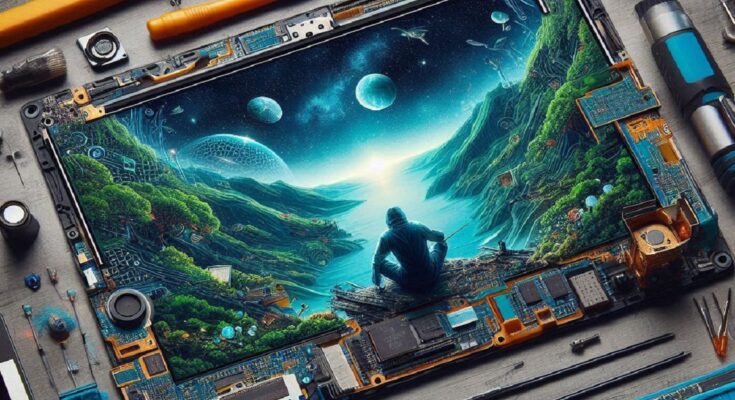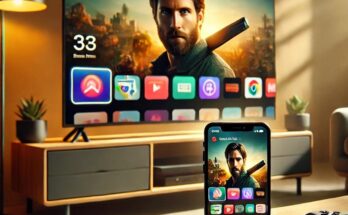The dreaded sight – a cracked LCD screen on your beloved phone, laptop, or tablet. It disrupts your mobile world, hindering your ability to connect, game, or simply navigate your day. While replacing the entire display might seem like the only option, there’s a flicker of hope for the DIY enthusiast. This guide will explore the world of LCD display repair, delving into the feasibility, steps involved, and potential pitfalls.
Before We Begin: A Reality Check
Let’s be honest – successfully repairing a cracked LCD panel at home is a challenging feat. These displays are intricate assemblies, and any misstep can render them permanently unusable.
Here’s why attempting a DIY repair might not be the best course of action:
- Delicate Components: LCD panels are composed of thin layers of glass and sensitive electronics. Even the slightest pressure or incorrect handling can cause irreparable damage.
- Specialized Tools: Proper repair often requires tools like heat guns, specialized screwdrivers, and replacement parts, which can be expensive for a one-time fix.
- Hidden Damage: Cracks are often just the tip of the iceberg. Internal damage to the backlight or liquid crystals might not be readily apparent, leading to further issues even after a seemingly successful repair.
Considering Alternatives:
In most cases, professional repair or replacing the entire display panel is the safer and more reliable option. Here’s why:
- Expertise and Tools: Professionals have the experience and tools to handle the repair process with minimal risk of further damage.
- Warranty: Many professional repairs come with a warranty, offering peace of mind in case of any issues.
- Time and Cost: While replacing the entire panel might seem costly upfront, factoring in the potential cost of replacement parts, tools, and the risk of further damage during a DIY attempt, professional repair might be a more cost-effective solution in the long run.
However, if you’re the adventurous type and understand the risks involved, here’s a glimpse into the world of DIY LCD repair (proceed with caution):
Understanding the Damage:
Not all cracks are created equal. Here’s what you need to assess:
- Severity of Crack: A small hairline crack might be a minor annoyance, while a large spiderweb of cracks could render the display unusable.
- Touch Functionality: Does the touchscreen still respond properly? Cracks can sometimes disrupt touch sensitivity.
- Display Functionality: Are there any dead pixels, discoloration, or visual distortions?
The severity of the damage will determine if a DIY repair is even a possibility. Deep cracks, touch issues, or visual distortions are strong indicators that a professional repair or replacement is necessary.
Gathering Supplies:
If you decide to proceed, here’s what you’ll need:
- Replacement LCD Panel: Ensure it’s compatible with your specific device model. Look for reputable sellers and double-check the specifications before purchasing.
- Tool Kit: You’ll need a set of small screwdrivers, prying tools (like spudgers), and possibly a heat gun (depending on the adhesive used).
- Replacement Adhesive: Research the type of adhesive used in your device to ensure proper adhesion of the new panel.
- Safety Gear: Safety glasses and ESD (electrostatic discharge) protection are recommended to minimize the risk of accidental damage.
The Repair Process (Again, Proceed with Caution)
Disclaimer: The following steps are a general guideline. Specific repair procedures can vary greatly depending on your device model. It’s crucial to consult detailed repair guides specific to your device before attempting any disassembly.
- Device Backup: Before starting, back up all your important data.
- Power Down: Ensure your device is completely powered off before disassembly.
- Disassembly: Following your specific repair guide, carefully disassemble your device to access the LCD panel.
- Heated Removal (if applicable): Some displays use adhesive that requires heat to loosen. Use a heat gun cautiously following the specific instructions for your device.
- Panel Removal: Gently remove the broken display, taking care not to damage any surrounding components.
- Cleaning: Clean the frame where the new panel will be placed, removing any dust or debris.
- Adhesive Application: Apply the replacement adhesive according to the manufacturer’s instructions.
- Panel Placement: Carefully position the new panel and gently press it into place.
- Reassembly: Following the disassembly steps in reverse order, carefully reassemble your device.
- Testing: Power on your device and test all functionalities of the new display:
- Visual Inspection: Look for any dead pixels, discoloration, or visual distortions.
- Touchscreen Functionality: Ensure the touchscreen responds accurately across the entire surface.
- Brightness and Color Accuracy: Compare the display’s brightness and color reproduction to how it was before the crack.
If you encounter any issues during testing, it’s best to stop and reassess. You might need to consult a professional or attempt the repair again with a new display panel.
The Bottom Line
While the steps above provide a glimpse into the DIY LCD repair process, remember – it’s a delicate and risky operation. For most users, the potential benefits of a successful repair are often outweighed by the high chance of causing further damage.
Here are some resources to help you make an informed decision:
- Manufacturer Repair Services: Many device manufacturers offer repair services or authorized repair centers. Check their websites for details.
- Third-Party Repair Shops: Reputable third-party repair shops can often handle LCD replacements at a lower cost than manufacturer services.
- Online Repair Guides: Extensive online resources offer detailed repair guides for various devices. However, proceed with caution and ensure the information is specific to your device model.
Ultimately, the choice is yours. If you’re comfortable with the risks and have the necessary tools and skills, a DIY repair might be an option. However, for most users, seeking professional repair or replacement is the safer and more reliable course of action.
By understanding the risks and exploring your options, you can make the best decision for your cracked screen situation!




